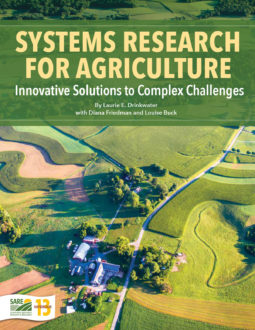While meetings are important, nothing can ruin a collaboration faster than long, drawn-out get-togethers in which participants feel little is accomplished. Learning to conduct effective meetings is a key skill for collaborative groups in planning and carrying out agricultural systems research.
When the project team is forming, the group will spend more time in meetings to build the foundation for collaboration and to allow for discussion and exchange of ideas. After members have become familiar with one another and with their respective disciplines, meetings should focus more on planning and decision-making. If there are too many meetings, involvement will be viewed as a burden and participation will lag.
A good meeting begins with a clear purpose and a carefully planned agenda; it ends with a brief review of accomplishments, a list of action steps and an evaluation of the meeting. The atmosphere should encourage participation and progress toward shared goals. The group should make decisions using a transparent process that everyone understands and should deal with difficult dynamics constructively.
Planning the Meeting
Consider the purpose of the meeting. Review the big-picture goals to plan how work will be spread out over a series of meetings and to determine when major activities will take place. Avoid trying to get too much done in one meeting; team members will be exchanging ideas and information between meetings. Save important decisions, or welcoming new members to the group, for a meeting. A few other tips:
- Determine if everyone needs to attend. Some project decisions can be made by the core scientific team alone, while others will require that farmers and other team members be present.
- Once the team has formed and the project becomes regularized, strive to keep meetings short and efficient. Participants will be more willing to attend subsequent meetings if they feel their time is being used well.
- Consider strategies for dealing with the distance some participants may need to travel, such as varying the location or using conference calls, Skype or webinars. If team members are widely distributed, consider building an extended meeting around an activity of common interest, such as a conference, to help justify the travel time and cost.
- Prioritize agenda items by their importance to most participants. Assign realistic amounts of time to each agenda item.
To help make meetings efficient and inclusive, always take the following basic measures:
- Plan for the meeting, and prepare yourself and other participants for it in advance.
- Solicit agenda items from all team members.
- Determine what information is necessary for decisions that need to be made, and send materials out beforehand.
During the Meeting
Assign the roles of (1) facilitator, (2) recorder, and (3) timekeeper. Different individuals can assume each role or one person can assume all three.
Decide as a group which rules to use for making decisions. To review the basic options, refer again to p. 31–32 on rules for reaching agreement. Different rules can be applied to different decisions depending on their significance to the future of the project. The team may want to use consensus when buy-in from each member of the core team is important to their continued engagement. Majority rule may be sufficient when deciding when to hold an event that not everyone needs to attend. The “person in charge decides” rule can be applied for certain administrative decisions.
Establish a code of conduct for participants. Although academic culture may accept interrupting and authoritarian posturing, collaborative work is more effective when communication is polite and egalitarian. Consider a sample code of conduct that encourages meeting participants to:
- Listen carefully to others
- Respect different opinions
- Be acknowledged by the facilitator before speaking
- Refrain from interrupting.
As the group moves through the agenda, abide by the established timetable. If members cannot reach closure on certain items in the time allowed, propose a viable alternative process for doing so.
Bring closure to the meeting by:
- Confirming major decisions
- Reviewing action steps
- Evaluating the meeting
- Planning for the next meeting.
